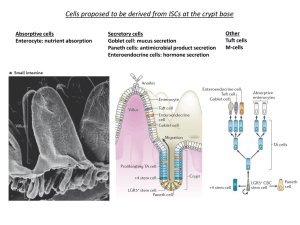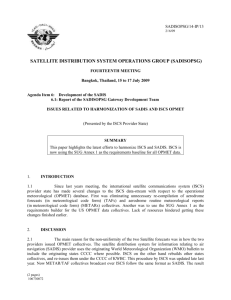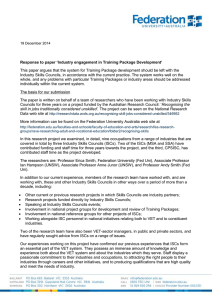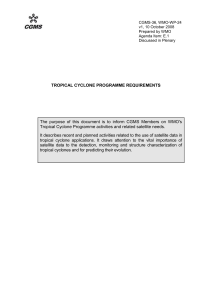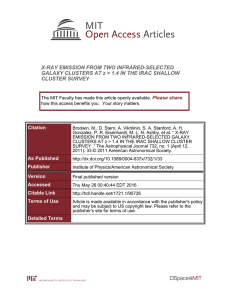The International Satellite Communications System (ISCS)
advertisement
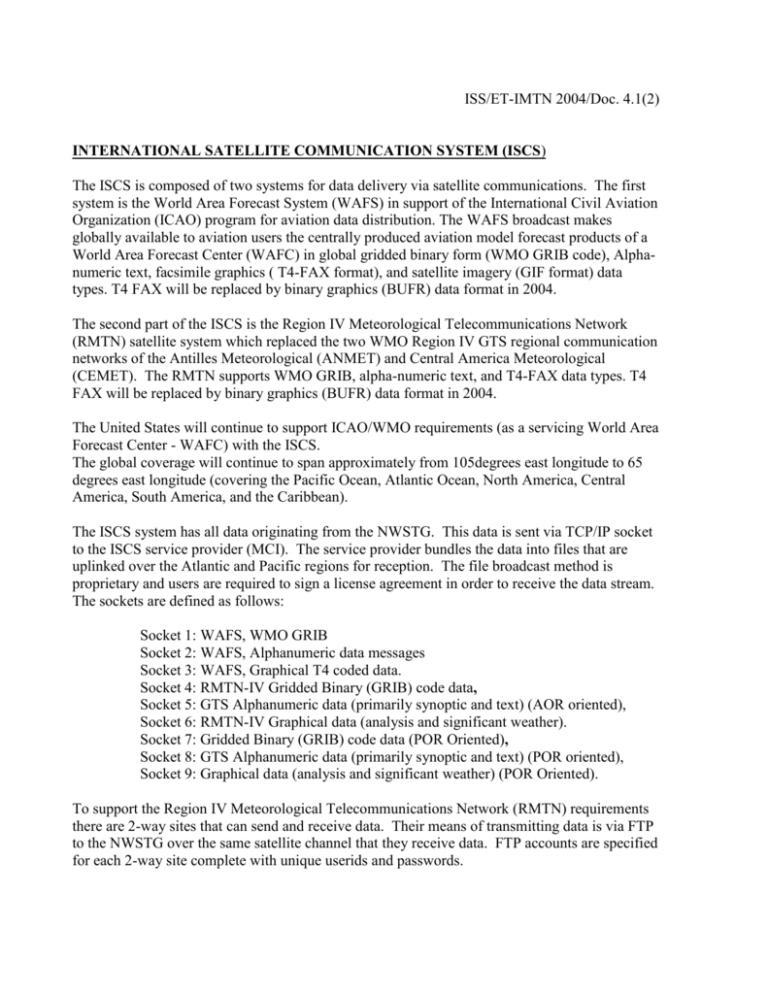
ISS/ET-IMTN 2004/Doc. 4.1(2) INTERNATIONAL SATELLITE COMMUNICATION SYSTEM (ISCS) The ISCS is composed of two systems for data delivery via satellite communications. The first system is the World Area Forecast System (WAFS) in support of the International Civil Aviation Organization (ICAO) program for aviation data distribution. The WAFS broadcast makes globally available to aviation users the centrally produced aviation model forecast products of a World Area Forecast Center (WAFC) in global gridded binary form (WMO GRIB code), Alphanumeric text, facsimile graphics ( T4-FAX format), and satellite imagery (GIF format) data types. T4 FAX will be replaced by binary graphics (BUFR) data format in 2004. The second part of the ISCS is the Region IV Meteorological Telecommunications Network (RMTN) satellite system which replaced the two WMO Region IV GTS regional communication networks of the Antilles Meteorological (ANMET) and Central America Meteorological (CEMET). The RMTN supports WMO GRIB, alpha-numeric text, and T4-FAX data types. T4 FAX will be replaced by binary graphics (BUFR) data format in 2004. The United States will continue to support ICAO/WMO requirements (as a servicing World Area Forecast Center - WAFC) with the ISCS. The global coverage will continue to span approximately from 105degrees east longitude to 65 degrees east longitude (covering the Pacific Ocean, Atlantic Ocean, North America, Central America, South America, and the Caribbean). The ISCS system has all data originating from the NWSTG. This data is sent via TCP/IP socket to the ISCS service provider (MCI). The service provider bundles the data into files that are uplinked over the Atlantic and Pacific regions for reception. The file broadcast method is proprietary and users are required to sign a license agreement in order to receive the data stream. The sockets are defined as follows: Socket 1: WAFS, WMO GRIB Socket 2: WAFS, Alphanumeric data messages Socket 3: WAFS, Graphical T4 coded data. Socket 4: RMTN-IV Gridded Binary (GRIB) code data, Socket 5: GTS Alphanumeric data (primarily synoptic and text) (AOR oriented), Socket 6: RMTN-IV Graphical data (analysis and significant weather). Socket 7: Gridded Binary (GRIB) code data (POR Oriented), Socket 8: GTS Alphanumeric data (primarily synoptic and text) (POR oriented), Socket 9: Graphical data (analysis and significant weather) (POR Oriented). To support the Region IV Meteorological Telecommunications Network (RMTN) requirements there are 2-way sites that can send and receive data. Their means of transmitting data is via FTP to the NWSTG over the same satellite channel that they receive data. FTP accounts are specified for each 2-way site complete with unique userids and passwords. ATLANTIC OCEAN REGION (AOR) The AOR portion of the successor ISCS will be centered at the WorldCom shared Master Satellite Hub, in Andover, Maine. The Master Satellite Hub will be linked via a 128 Kbps (384Kbps bursting) terrestrial (redundant) circuit to the National Weather Service Telecommunications Gateway (NWSTG) in Silver Spring, Maryland. The NWSTG will continue to serve as the central point of data entry into the ISCS. All ISCS data originating at the NWSTG will be transmitted, using TCP/IP network protocol, over to the WorldCom Andover facility for broadcast to all ISCS AOR sites. PACIFIC OCEAN REGION (POR) The POR portion of ISCS will be centered at the WorldCom shared Master Satellite Hub in Yacolt, Washington. The Yacolt Master Satellite Hub will be linked via a 64 Kbps (128Kbps bursting) terrestrial (redundant) circuit to the WorldCom shared Master Satellite Hub in Andover, Maine. All ISCS WAFS data originating at the NWSTG will be transmitted, using TCP/IP network protocol, to the Yacolt facility (via the Andover facility) for broadcast to all POR sites. Future plans include 2-way sites in the Pacific Ocean Region BACKUP The ISCS has increased the number of Backup options. Multiple ISDN dialup connections between the Andover Hub, UK WAFC, the Aviation Weather Center (AWC) Kansas City, and the eventual NWS Mt. Weather disaster recovery site. ATLANTIC OCEAN REGION (AOR) The AOR portion of the successor ISCS will be centered around the WorldCom shared Master Satellite Hub, in Andover, Maine. The Master Satellite Hub will be linked via a 64 Kbps (128Kbps bursting) terrestrial (redundant) circuit to the National Weather Service Telecommunications Gateway (NWSTG) in Silver Spring, Maryland. The NWSTG will continue to serve as the central point of data entry into the ISCS. All ISCS data originating at the NWSTG will be transmitted, using TCP/IP network protocol, over to the WorldCom Andover facility for broadcast to all ISCS AOR sites. ISCS WAFS – Pacific Ocean Region ISCS Two-Way Site Configuration IP Note: • Remote Terminal consists of a 2.4m C-Band Antenna and PES 8000 Indoor Unit • PES 8000 is configured with one (1) Turbo Port Card • Interface Card for NWS includes an Ethernet PLC and provides 10 Mb RJ45 Connection Note: 1. Remote Terminal consists of a 2.4m C-Band Antenna and PES 8000 Indoor Unit 2. PES 8000 is configured with one (1) Turbo Port Card 3. Interface Card for NWS includes an Ethernet PLC and provides 10 Mb RJ45 Connection ISCS Receive Only Site Configuration Existing Configuration IFL Cable Hughes PES 8000 Memotec Star 4 Junction Box 2.4 m Antenna CBand Comtech CDM-IP 300L t e n re h t E Local dial in Firewall Met Lab TCP/IP Upgrade Configuration Commercial Power UPS Notes: 1. Remote terminals consists of a 2.4 meter C-Band Antenna and Personal Earth Station (PES) Indoor unit with a Memotec unit and Star4 workstation. 2. Two way sites have the PES 8000 that will only need a new card installed for TCP/IP. 3. The one way sites will have the PES 4000 replaced by the COMTECH CDM-IP 300L. 5. Both site types will have upgraded workstations that connected by Ethernet.
